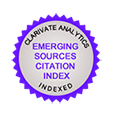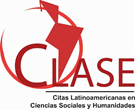Imadaddin Nasimi and Turkic artistic heritage: the nature of succession
Abstract
The relevance of Nasimi's contribution to Turkish and Azerbaijani literature is based on his capability to merge successfully Arabic, Persian, and Turkic cultural elements, turning him into one of the most important figures in medieval poetry. Despite the prominence of Persian and Arabic literature in the region, Nasimi stands out as an exceptional example of a poet who elevated his native Turkic language to the literary stage, thus filling a critical gap in the historical development of Turkic literature. The present study will debate Nasimi's contribution to the expansion of Turkish literature by using mysticism, philosophy, and love in a manner quite different from traditional literature and how in the course of doing so he helped bridge cultural gaps. Key findings reveal Nasimi's active role in the culturing of oral traditions and their adaptation to the broader Persian and Arabic context, positioning him as an important link in the development of the Turkish literary heritage. The aftermath of his work is immense and at the same time continues to shape the cultural identities of Turkey and Azerbaijan, further solidifying Nasimi's position as a foundational figure within the literature and culture of both countries.
Keywords:
Turkic heritage, Hurufi movement, Cultural identity, Love and philosophy in poetry, Intercultural exchange in literature.
Downloads
Published
How to Cite
Issue
Section
License
Copyright (c) 2024 Editorial "Universo Sur"

This work is licensed under a Creative Commons Attribution-NonCommercial-NoDerivatives 4.0 International License.
La editorial "Universo Sur", de la Universidad de Cienfuegos, publica el contenido de la Revista "Universidad y Sociedad" bajo una Licencia Creative Commons Atribución-NoComercial-SinDerivar 4.0 Internacional.
© Podrá reproducirse, de forma parcial o total, el contenido de esta publicación, siempre que se haga de forma literal y se mencione la fuente.










